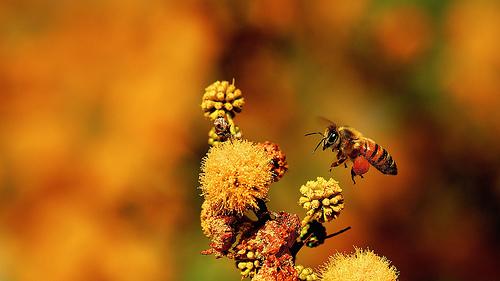
What do non-science majors stand to gain from a science classroom? I teach a biology course to undergraduate students who are, as it happens, not majoring in the sciences. I use the current crisis facing pollinators to introduce them to socio-environmental systems. Using the pollinator framework, I facilitate the development of critical thinking and problem-solving skills by offering them an opportunity to design a response to this crisis—which can help them understand the role of science in society (and the role of society in science).
The pollinator crisis is a remarkably complex problem, shaped by very different landscapes and plant communities; insect, bat, and bird populations; and various land uses and governmental jurisdictions—how can we possibly do the topic justice in the span of just a few short months without all of that important detail? After all, “for every complex problem, there is a simple solution … and it is wrong.”* Does this mean we need to account for every detail in the classroom to address complex issues like the one facing pollinators? Maybe not. Maybe complex issues can be distilled to their core elements.
This process of “detail distillation,” in which essential patterns and relationships are extracted from the details, does not mean that those details are unimportant. Rather, we cannot begin to appreciate them until we first have a grasp on the problem’s distilled essence, or “big picture.” (I like to think of this process much like zooming out of a Google map from Street View, which provides isolated details such as street names and images of individual buildings, to the scale of an entire state, which shows major roadways, bodies of water, and other interconnecting features that give us a sense of place and space.) Distillation of the pollinator crisis offers us a robust conceptual framework for creatively analyzing the complexity of the problem, and could include questions such as: Why do we care about pollinators? (Because we depend on plants for food, fiber, fuel, etc.—and plants, in turn, depend on pollinators to survive and thrive.) How do we impact pollinators? (Pollinators depend on plants for food—because we affect plant communities with activities such as agriculture, urban development, and recreation, we often also impact pollinator communities, for better or for worse.)
In this course, my students first learn about these relationships. What are the resources that plants provide to pollinators? How do the spatial and temporal patterns of plant populations impact pollinators as they migrate through space or through the seasons? What are the benefits to agriculture provided by pollinators, and what challenges to pollinators are found in modern agro-ecosystems? The crisis facing pollinators and other “wicked” environmental problems are not solved through bio-physical science alone—and students (especially these non-science majors) are genuinely excited to engage in discussions centered on the human and social elements of these problems.
Group projects follow, in which we discuss methods for identifying and framing research questions to better understand the pollinator crisis. We work together to describe the conceptual landscape of these questions and possible solutions, leveraging effective team work and communication skills. Last year’s projects focused on the design of realistic efforts that would improve pollinator health while also improving food security in the Washington, DC area—our “neighborhood.” Solutions included a rooftop garden consulting firm, an organic restaurant–community garden partnership, and a set of recommendations for pollinator-friendly trees to use when replanting urban forests.
These students, who will in all likelihood find professions outside of the research lab, are not treated as proto-scientists in this class. They possess and will continue to develop their own kinds of expertise—so instead, we introduce them to a scientific approach that shows them how to effectively interact with the complexities of science to address so-called “wicked” problems. The approach is clearly scientific, but provides a framework that could be used in many different contexts, regardless of the disciplines or topics involved. The toughest and most pressing environmental problems provide appealing entry points for teaching interdisciplinarity: these issues often require ideas from the natural sciences to be blended with those from the social sciences and humanities for durable solutions to emerge. This course is an opportunity to introduce teamwork, diversity, and problem-solving in a safe and interesting way that motivates the hard disciplinary work that will follow these students through their education.
* Adapted from H. L. Mencken’s "The Divine Afflatus" in New York Evening Mail (16 November 1917)
Photo: Danny Perez, Flickr/Creative Commons